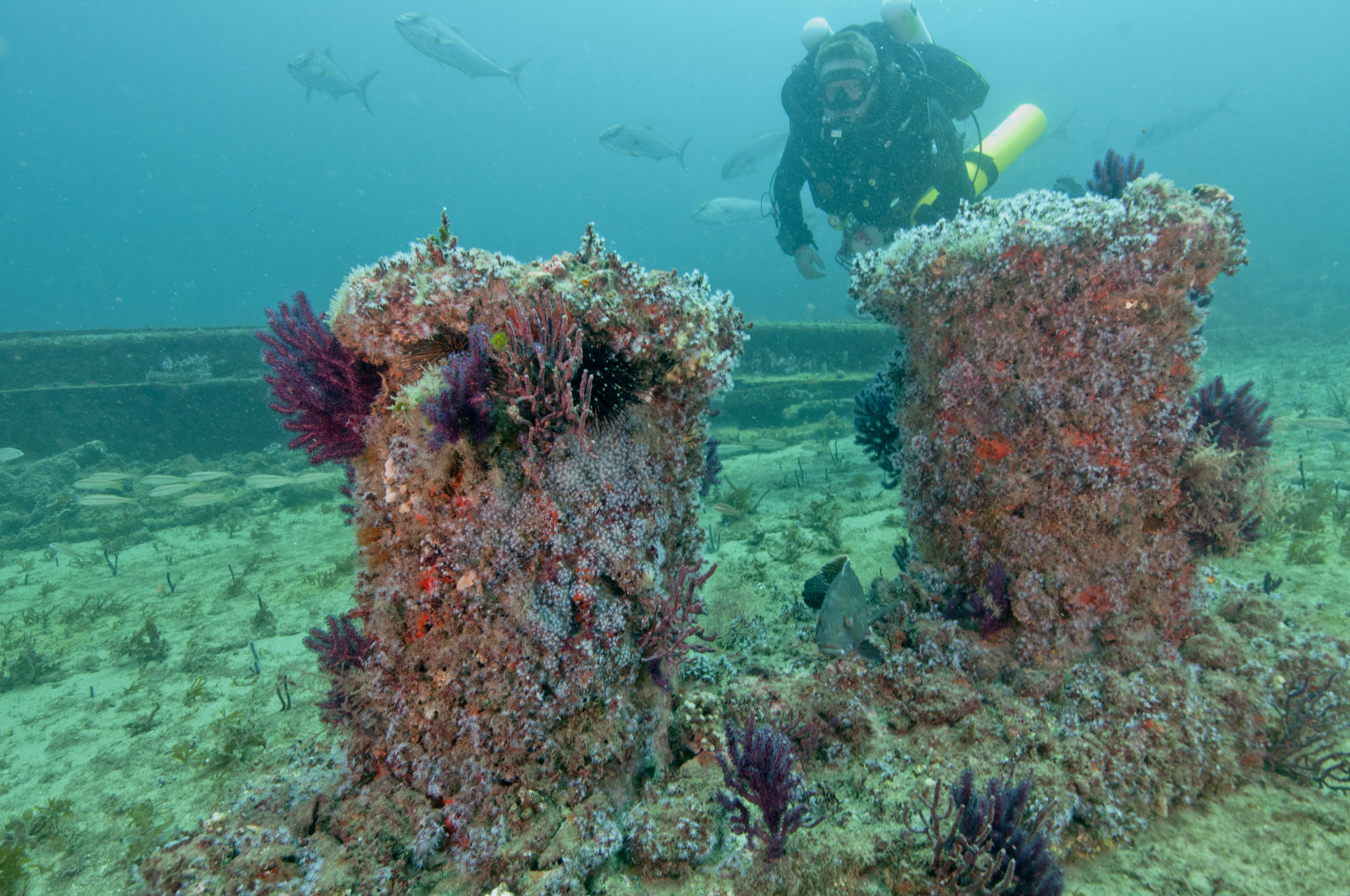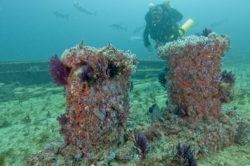
What are Artificial Reefs?

Overtime, shipwrecks often become artificial reefs, providing homes to corals and vibrant marine life. Featured is the Ashkhabad, a Russian tanker that was sunk by a German U-boat during WWII off the coast of North Carolina and could be protected by the proposed expansion of Monitor National Marine Sanctuary.
Coral reefs are some of the most diverse ecosystems in the entire world and are closely tied to our global economy, both for commercial and recreational purposes. They are home to an abundance of marine life, provide protection for our coasts, and support other far-off marine ecosystems. However, not all reefs in our ocean are real. Artificial reefs — human-made structures that mimic real coral reefs — also support biodiversity and healthy ecosystems by providing shelter, food, and other services to marine organisms.
Of all the artificial reefs in the world, those made of submerged shipwrecks are the most common, but these reefs can also be made of rocks, cinder blocks, limestone, steel, concrete and even wood. Bridges, lighthouses, and other offshore structures also often function as artificial reefs. Artificial reefs are beneficial because they can attract fish and other wildlife and as a result, tourism, recreational fishing and other commercial activities. These reefs do not take nearly as long to establish as natural coral reefs, and they can offset the pressure of heavy tourism on real reefs, which can take a toll on their health, while still allowing visitors to experience the wonder of the world’s ocean. Artificial reefs aren’t perfect for all situations though, as they can damage natural habitats if not carefully constructed and they run the risk of exponentially increasing tourism activity that spills over into surrounding areas, including natural reefs.

A green moray eel hides in the wreck of USNS Gen. Hoyt S Vandenberg, an artificial reef within Florida Keys National Marine Sanctuary. Photo Credit: Patrick Vandenabeele/NOAA
Generally, artificial reefs are NOT allowed in national marine sanctuaries except for Florida Keys National Marine Sanctuary in certain instances. The Florida Keys have several decommissioned vessels that were intentionally sunk in specific areas near the islands for the purposes of creating diving or fishing opportunities; many of these were sunk before the area was designated and protected as a national marine sanctuary. In fact, most of the artificial reefs in the sanctuary occurred prior to its designation. Some examples of intentionally sunk ships within the sanctuary include the Amesbury, Duane, Thunderbolt, and the Hoyt S. Vandenberg, the largest artificial reef in the sanctuary and second largest in the world. Today, new artificial reefs in the Florida Keys are only allowed after an extensive review and permitting process to ensure they would not be harmful to existing organisms and habitats in the surrounding area and that the proposed benefits of the artificial reef are likely to be achieved.
